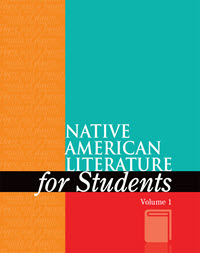| By Sarah Robertson |
Native American literature reflects the culture, history, and contemporary issues of the people who are Indigenous to what is now the United States. A study of the genre serves to debunk stereotypes and the concept of Native Americans as a monolithic group rather than a diverse group of peoples. Incorporating Native American literature into the classroom reinforces that people of this heritage are not historical figures of the past but rather a vibrant, dynamic part of contemporary American literature.
Native Americans have a long history of telling stories through oral traditions that included singing, chanting, and poetry. After European contact, Native American authors began to write about their culture and experiences primarily for a white audience. An example of this is Zitkala- Ša’s “The Soft-Hearted Sioux,” a short story about the experience of assimilation into white culture.
From the 1960s onward, Native American writers reclaimed their history through literature and wrote about their experiences in contemporary America, a period critics refer to as the Native American Renaissance. For example, Osage and Ponca writer Carter Revard’s 1980 poem “Discovery of the New World” speaks to the exploitation Native Americans faced after European contact, while Anishinaabe writer Louise Erdrich’s 1988 novel Tracks examines the modern struggles of Native American tribes in retaining their cultural identity. Similarly, Chickasaw writer Linda Hogan’s 1998 novel Power explores a clash between modern American power structures and Native American heritage. Through drama, William S. Yellow Robe Jr. observes differences between Native American culture and white culture in the 1988 play The Star Quilter.
The twenty-first century saw Native American authors gaining mainstream attention and writing for a variety of audiences and genres. Notably, Mojave and Latina poet Natalie Diaz, author of the poem “Abecedarian Requiring Further Examination of Anglikan Seraphym Subjugation of a Wild Indian Rezervation,” was awarded the Pulitzer Prize for Poetry in 2021. Additionally, works aimed at young adults emerged, including Eric Gansworth’s Give Me Some Truth, based on the Haudenosaunee author’s experiences growing up in the Tuscarora Nation. Cynthia Leitich Smith’s short story “A Real-Live Blond Cherokee and His Equally Annoyed Soul Mate” features young people grappling with new romance in a contemporary setting. Other notable Native American writers of the twenty-first century include Bruce King, Simon J. Ortiz, Beth Piatote, LeAnne Howe, Joseph Bruchac, and Laura Da’.
A study of Native American literature illuminates the complexities of American identity as a whole, and leads to a better understanding of the American experience. Through a selection of key novels, drama, poetry, and short stories—including those referenced here—Native American Literature for Students, Volume 1 offers a sweeping survey of Native American literature to help you seamlessly incorporate it into the classroom.
Meet the Author
Sarah Robertson is a writer, editor, and longtime contributor to For Students.


